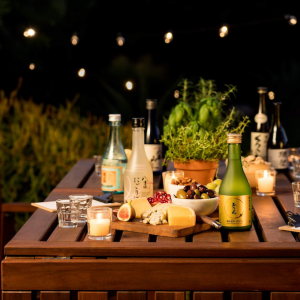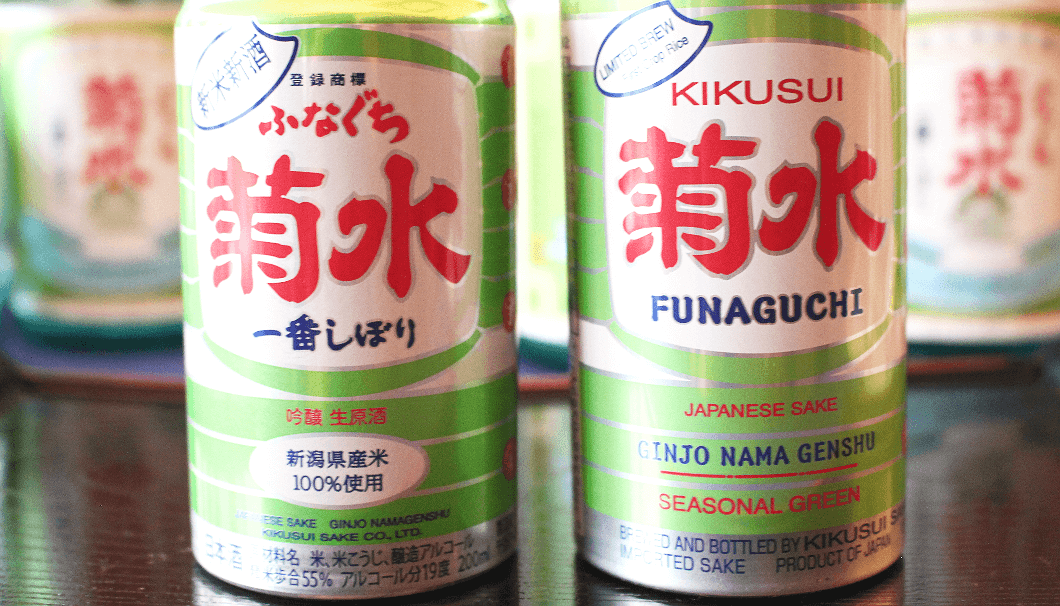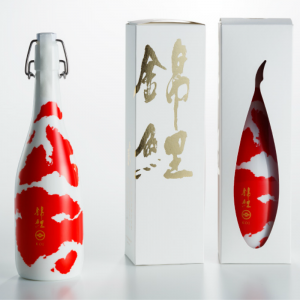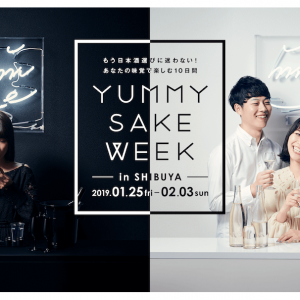
KIKUSUI Sake’s Seasonally Limited Ginjo Nama Genshu Out Now
On November 19 Kikusui rolled out its annual limited edition Shinmai Shinshu Funaguchi Kikusui Ichiban Shibori sake in Japan, with expected sales in the US beginning mid-January 2019. This is a a special variation of the KIKUSUI‘s long-selling Funaguchi Kikushi Ichiban Shibori – an unpasteurized nama genshu that initially went on sale in 1972 and has since sold upwards of 300 million cans.
These distinctively green cans of Shinmai Shinshu Funaguchi are the first of the new season and made with 100% Niigata rice also harvested this year and prepared in the fashion of a ginjo sake, which is rare for a nama genshu. The result is a crisp aroma and a light but lively taste with notes of freshly cooked rice.This taste is, of course, only available once a year so get it while you can!
◎Product Information
- Name: Shinmai Shinshu Funaguchi Kikisui Ichiban Shibori
- Type: Ginjo Nama Genshu
- Rice polishing: 55%
- Alcohol Content: 19%
- Ingredients: Rice, Koji, Brewer’s Alcohol
- Made with 100% Niigata Rice
LINK: SAKETIMES | 2018/11/27 | 菊水酒造が限定醸造の『新米新酒ふなぐち菊水一番しぼり』を出荷開始!
Japan’s Biggest Beauty Trends of 2018 Chosen and Includes…Sake Kasu?
Beauty and cosmetics website @cosme announced its list of 12 beauty trends that defined the industry in 2018. Trends included “K-Beauty” (Korean makeup and beauty products), and the significance of social media-based word-of-mouth marketing.
But one surprising entry was “Sake Kasu Biyo” or “Sake Lees Beauty Treatments.” After sake fermentation is complete, the drinkable portion is pressed out, leaving behind a solid matter called kasu. This sake-making byproduct is said to bestow numerous health and beauty benefits, including, supposedly, softer, whiter skin and healthier digestion. It was also a main ingredient in many facial treatments on the market this year.
The Okomeya “Fermentation Cafe Stand” that opened this year in Tokyo may have been behind sake kasu’s popularity in beauty this year. The eatery features a menu of items containing sake kasu, like gelatos and curries. Online beauty influencers also played a part by sharing kasu-heavy recipes in abundance this year.
Kasu is already a common cooking ingredient in Japan, so its newfound beauty-boosting reputation is just one more reason not to let this sake byproduct go to waste.
LINK: PRTIMES | 2018/12/03 | 2018年ビューティ業界を賑わせたキーワード「ビューティトレンド by @cosme」を発表!
Uruguay Receives First-ever Import of Sake from Japan
On December 4, Nanbu Bijin, a sake brewery based in Ninohe City, Iwate Prefecture packed and labeled 150 bottles of its Special Junmai Sake bound for to the South American nation of Uruguay for the first time.
Uruguay has few people of Japanese descent and little connection to sake at all, but efforts by the Japanese ambassador managed to spark a sudden interest in the drink. At a tasting and lecture event held at Ambassador Tatsuhiro Shindo’s home in the capital city of Montevideo, Uruguayans responded well to the beverage and importers got to work.
Nanbu Bijin president Yuzo Kuji answered the call and began filling orders for use in restaurants. “Because there seems to be no authentic Japanese food there,” Kuji explained, “I chose two types of sake that can be adapted to the local food.”
The company is no stranger to exports, with distribution lines in 37 countries worldwide already. Uruguay is Nanbu Bijin’s third South American customer after Brazil and Peru, but Kuji hopes that this will be an important connection to help further an appreciation of the beverage in a territory uncharted by sake until now.
LINK: 岩手日報 | 2018/12/04 | 南米ウルグアイに日本酒初出荷
◎Three Online Platforms to Showcase Your News
By filling out the form of SAKETIMES PRESS English , your news will be presented on this Weekly News section of the SAKETIMES International website.
◎無料リリース情報配信機能「SAKETIMES PRESS English」
この記事への掲載は、リリース情報配信機能「SAKETIMES PRESS English」から無料でお申し込みいただけます。日本語で申請いただくと、英語の情報に編集し、掲載します。海外に向けた新規リリース情報がございましたら、SAKETIMES PRESS Eglish 申請フォーム より申請ください。





Comments